Scientific name Canis lupus familiaris Higher classification Dog | Temperament Excitable, Calm, Active | |
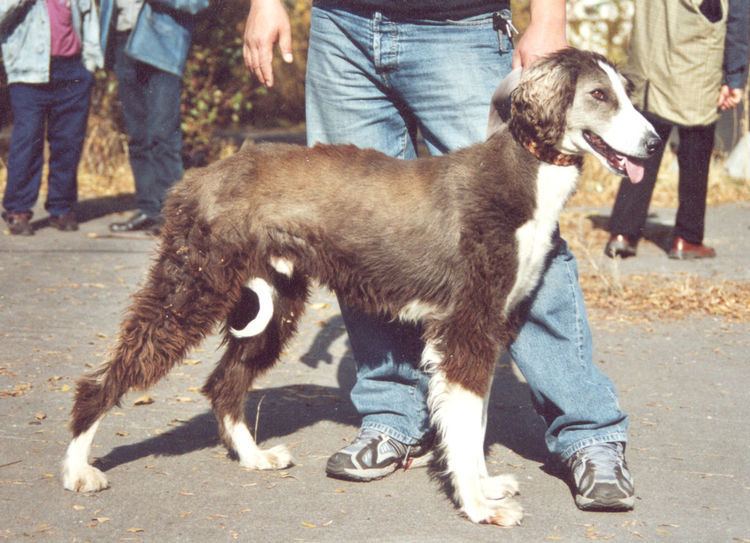 | ||
Other names TajganKyrgyz SighthoundKyrgyzskaya Borzaya Taigan Notes Nationally recognized by the Hunting Commission of the Kyrgyz Ministry of Environmental Protection and by a number of national FCI member clubs. Colors Black, White, Yellow, Grey, Brown, Black & White Height Male: 65–82 cm, Female: 55–65 cm Similar Tazy, Hortaya borzaya, Silken Windhound, Rampur Greyhound, Magyar agár | ||
Taigan dog breed
The Taigan (Kyrgyz: Тайган) also known as Kyrgyzdyn Taighany (Kyrgyzskaya Borzaya Taigan in Russian) is a sighthound breed from Kyrgyzstan, which is not yet recognized by the FCI, but is recognized by a number of kennel clubs on national level.
Contents
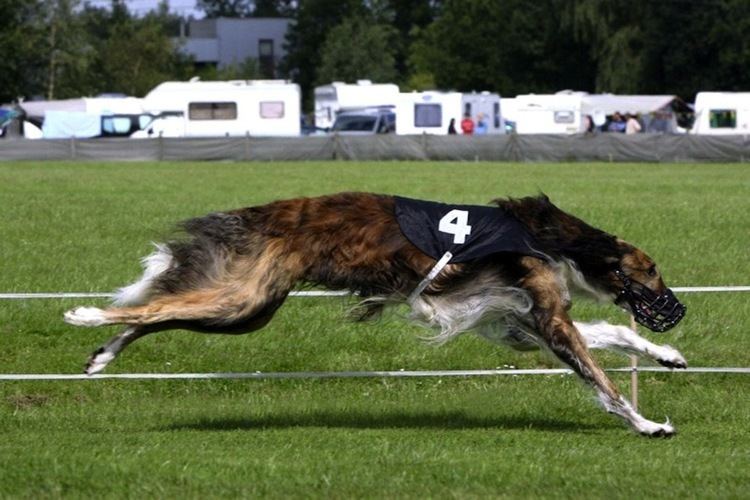
They have medium-length and slightly curly hair and are similar in shape to Greyhounds. They are a member of the sighthound family.
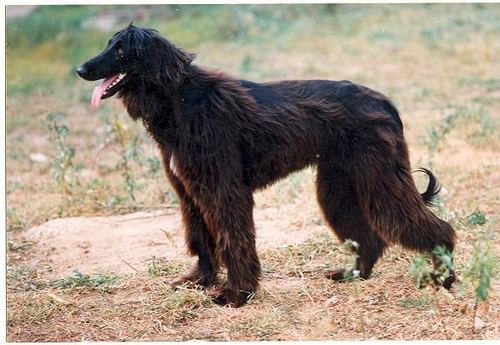
Origin and history
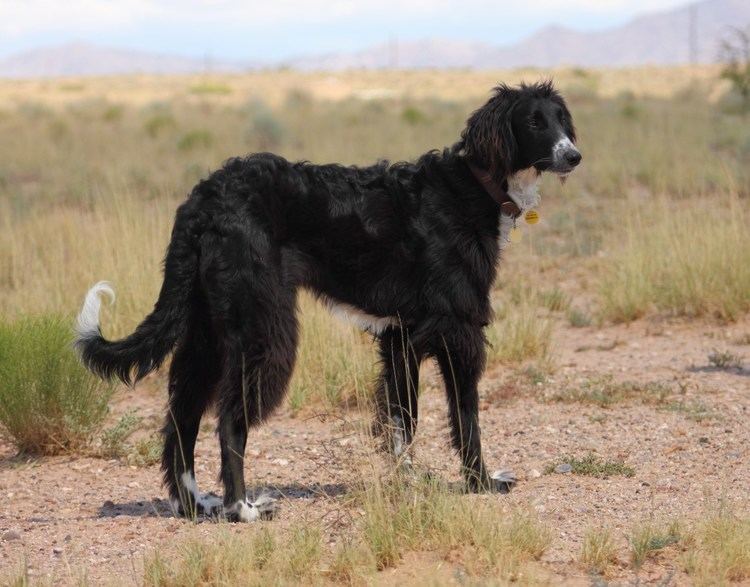
Same as Azawakh, Sloughi, Saluki, Afghan Hound and Mid-Asiatic Tazi, the Taigan is a member of the family of Eastern Sighthounds, which can be found from Northern Africa to Central Asia.

During most periods of their history, the Kyrgyz have been a predominantly nomadic people, which has migrated through vast parts of Siberia and Central Asia. Therefore it is very unlikely that the origins of the Taigan can be traced back to one single ancestor. However, the Taigan in its present form is a pronounced mountain breed, perfectly adapted to its work in the alpine regions of the Tian Shan mountain range.
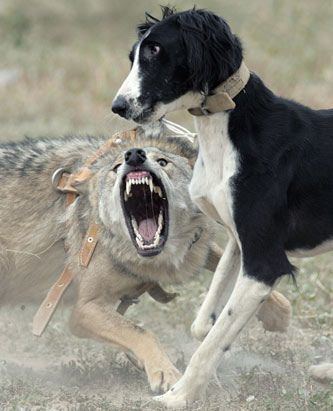
In the 1930s, Soviet cynologists began to register the existing specimens in the Kyrgyz SSR, but this work had to be stopped after the German invasion of the USSR in 1941. In 1964, the USSR laid down the first standard for the breed. Different from many western countries, live coursing has always been legal in the Soviet Union; hunters were organised in kolkhozy and had to deliver certain amounts of fur to the collective farms.
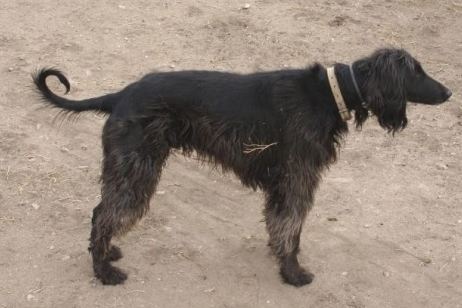
After Kyrgyzstan became independent in 1991, the role of the breed underwent a change. The collapse of the collective farms forced many people in the rural areas of Kyrgyzstan to return to the nomadic life of their ancestors. For some of them, hunting with the Taigan became again an occupation which helps them to earn their living. On the other hand, parts of the new urban upper class have discovered the Taigan as a prestigious symbol of national heritage during the past few years. In 1995, the Cinologist Council of the Kyrgyz Republic (a body connected with the Ministry of Agriculture) adopted a new breed standard, which was later approved by the hunting commission at the Ministry of Environmental Protection. A number of breed shows were held in Bishkek, but with only small attendance by hunters from the countryside.
During a state visit to Norway in November 2003, the former Kyrgyz president Askar Akayev gave two Taigan puppies as a present to King Harald V and prime minister Kjell Magne Bondevik. This caused a small diplomatic turmoil, since the Norwegian import regulations require a quarantine of four months for dogs entering Norway from a non-European country, and neither the king nor the prime minister were willing to keep the dogs. To avoid hurting the feelings of the Kyrgyz delegation, the mayor of the city of Trondheim, Rita Ottervik, decided to take care of the two puppies, which were later given to experienced dog owners after they had passed quarantine.
Since 2005, a national kennel club exists in Kyrgyzstan, which has been admitted to the FCI as a contact partner in 2009. This would now enable Kyrgyzstan to apply for international recognition of the Taigan, provided that an application will be sent to the FCI breed standard commission. However, the FCI member clubs in Russia, Ukraine, Belarus, Kazakhstan, Uzbekistan, Estonia, Latvia, Lithuania, Hungary, Poland and Germany have already recognized the Taigan on national level.
Appearance
The Taigan is a sighthound, which is a bit larger than medium height. The minimal height for male specimens is 65 cm and for females 60 cm. The colours are black, black with white (most common), grey, brown and yellow (or other shades and variations of this color) and white. Areas of dark colored coat may have white marks. The coat is soft, long, and thick. In the winter, undercoat is developed. The ears are drooping, thick and covered with long, soft, wavy fur. A distinguishing mark of the Taigan is the ring on the end of the tail - the base vertebras of the ring are jointed, so that the ring cannot be unrolled.
The large volume of the lungs, the (in comparison to other sighthounds) strong bone structure and the thick coat enable the Taigan to work in rugged terrain, and at elevations up to 4000 m above sea level.
Use and activity
The Taigan is a sighthound adapted to the extreme mountainous conditions in the Tian Shan. Typical prey are ibex, roe deer, wolf, fox and marmot. Some hunters also use the Taigan in conjunction with a trained bird of prey, especially with the golden eagle. The hunt for the Tolai hare (Lepus tolai), is, however, an exception.
Due to the rugged surface of its native environment, the Taigan hunts with all senses, i.e. unlike other sighthounds not only by sight, but also by scent and hearing, which gives its hunting style some similarities with breeds like Ibizan Hound or Pharaoh Hound.
